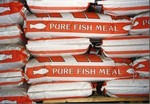
Vietnam is the second such country to face these regulations, with the FSC ordering the examination of all consignments of shrimp products imported from the Southeast Asian country.
Vietnam has exported US$1.3bn worth of shrimp this year, of which 27% went to the Japanese market, 21% to the US, and 14% to the EU.
Unreasonable
In a statement, the Vietnam Association of Seafood Exporters and Producers (Vasep) said it was unreasonable for Japanese authorities to require such a low ethoxyquin content.
VASEP argued that ethoxyquin is an antioxidant widely used in animal feed, and that in most countries, the allowed ethoxyquin content levels are between 75 and 150 ppm.
Tran Bich Nga, deputy director of Nafiqad, Vietnam’s seafood quality control agency, said that the EU allows a maximum ethoxyquin content at 150 ppm at in animal feed.
Nga explained that Japanese laws say that if no specific residue limitation has been set for one specific product, regulators set limitations by default, which in this case is 0.01 ppm.
Levels need to be fixed
Vasep said that it has asked Vietnam’s Ministry of Agriculture and Rural Development to set up a new ceiling for ethoxyquin content in shrimp feed at 0.5 ppm instead of the current 150 ppm, which could help ease residues in shrimps.
The association has also has advised farmers and enterprises not to feed shrimp with products containing ethoxyquin, and that 10 days before the harvesting, farmers should provide other feed products with no ethoxyquin. However, it acknowledged that this move will result in higher costs for farmers.





